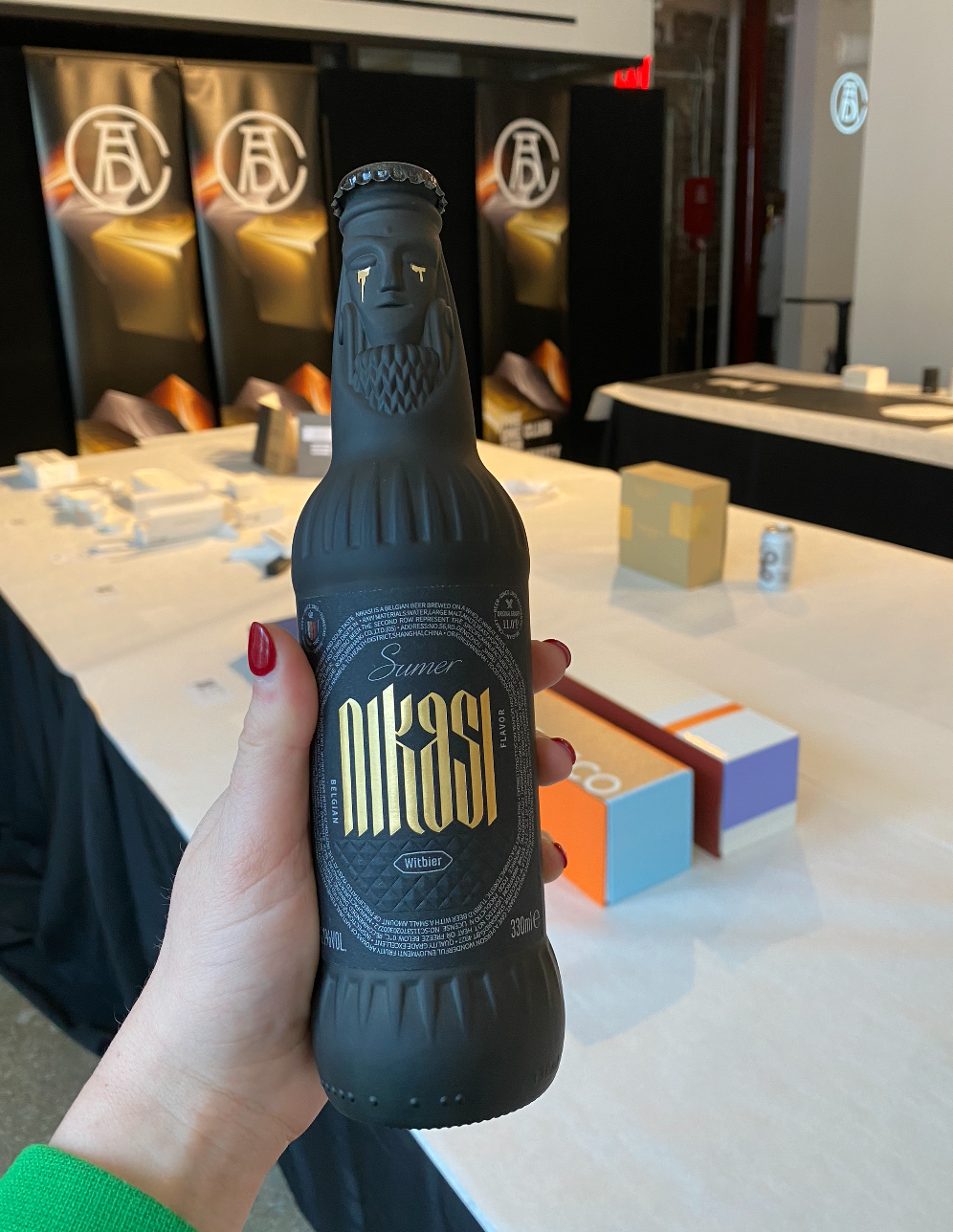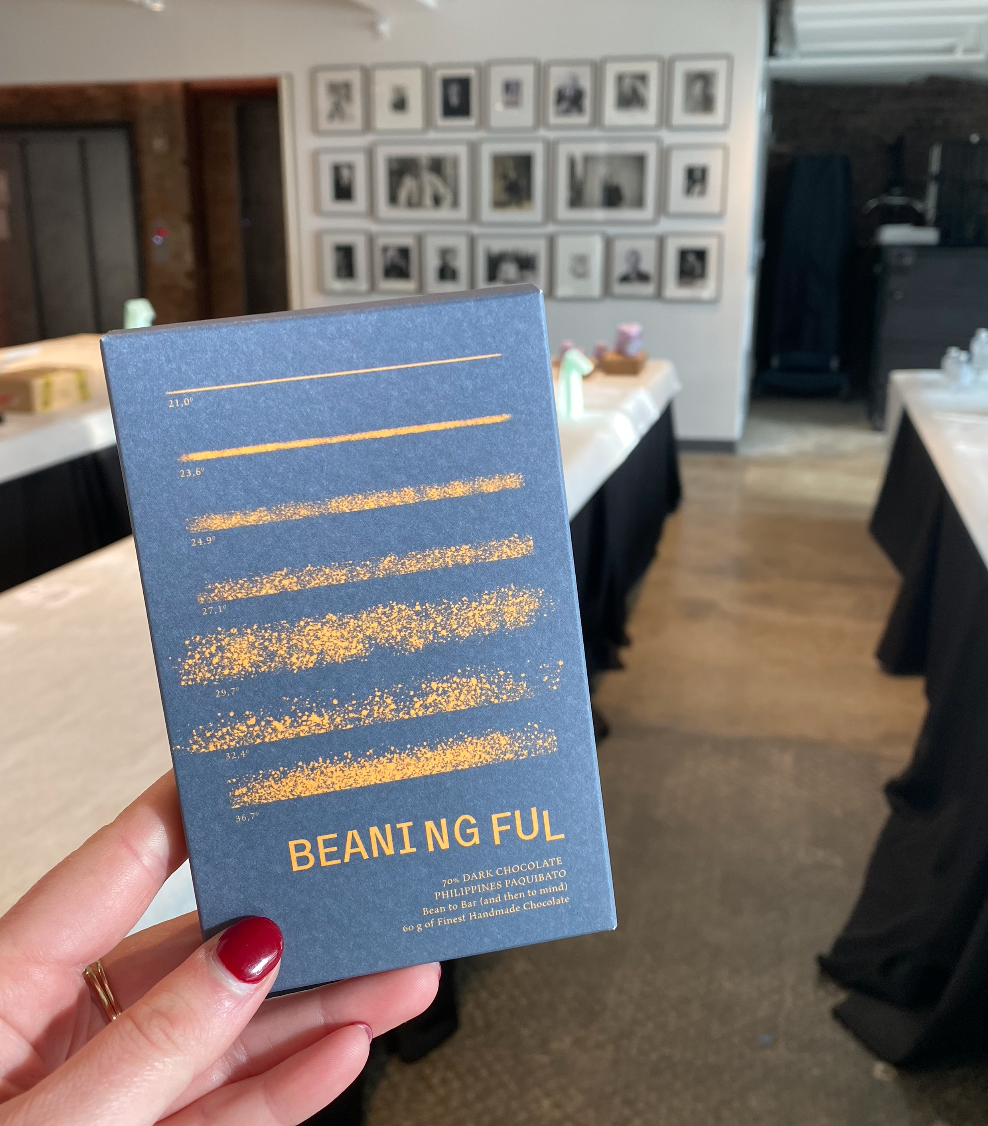
From the Jury Room: ADC's Packaging/Product Design
By Alixandra Rutnik on Mar 31, 2023
The ADC 102nd Annual Awards Packaging & Product Design Jury talks about the importance of sustainable design
It’s not new news, but the environmental statistics on plastic waste are astronomical. Americans alone buy about 50 billion water bottles per year, which could wrap around the circumference of the earth five times and counting.
Sustainable practices are front of mind for the ADC 102nd Annual Awards Packaging Design and Product Design Jury. The conversation continuously landed on excess waste created by packaging. But it’s not really packaging that’s the problem, according to some of them, but rather it's us. Consumer behavior is the issue and over-packaging is a result of our habits as people living in society.
The jury had a lot to say on this topic and more when chosing the Packaging Design & Product Design entries worthy of a coveted ADC Cube.

Andy Baron
Executive Creative Director at Turner Duckworth
I think two things happened this past year. The first is materials studies, and as a result, people are using more sustainable materials.
The other thing is you have packaging design that is made to function better digitally. So you’re seeing bigger type, and you’re seeing things that stand out on a small screen. And on the other end of the spectrum, it’s just design in general.
There’s a lot of work that is only designed to work on Instagram, but that’s not really where packaging needs to live. It needs to live on a shelf. They’re designing for the audience that is looking at it on social media first, versus the people that are actually buying the product.
People used to be more patient. And there was way more to discover in the craft of packaging. Now as designers, we assume people are going to look at something and throw it away, so it needs to grab your attention instantly.
The reason why the Coca-Cola bottle is so good is because the creative brief was so good. The brief: I need you to design me a bottle that you can identify while broken or in the dark.
It’s a note on how important a good creative brief is. I’m sure the best work here today had a good brief and a great client behind it. And maybe some of the work that is weaker didn’t have a strong brief or didn’t have a team that was able to interpret it correctly.
"It’s a note on how important a good creative brief is. I’m sure the best work here today had a good brief and a great client behind it."

Matt Sia
Creative Director at Pearlfisher New York
As audiences start getting more educated on what sustainability actually is versus what it sounds or looks like, it forces companies to act on it– they can’t get away with ignoring the problem anymore. Now it’s more of a requirement, which is good, but then it also has an impact on the types of materials we have to use.
One of the proudest moments as a designer is seeing the final product look like the original sketch in the first round. When you go in with an idea, and it doesn’t change much from start to finish, it means a lot of people took the time to make it happen. And on the client side, there are a lot of real challenges that keep work from getting out, so when it does, it’s a success.
"One of the proudest moments as a designer is seeing the final product look like the original sketch in the first round."

Kasi Turpin
Designer & Illustrator at Lady Luck NYC
The trends are flipping out faster for package design design type faces, color palettes, and illustration styles. And packaging now is going beyond just packaging. It’s creating a lifestyle aesthetic. It’s becoming about who the person is that buys the product and then tailors the aesthetic to them. It’s about way more now than just nice packaging on shelves.
"And packaging now is going beyond just packaging. It’s creating a lifestyle aesthetic. It’s becoming about who the person is that buys the product and then tailors the aesthetic to them."

Abraham Lule
Graphic Designer at Work by Lule
On materials and sustainability, a lot of brands are bringing those practices to life, and yes, they’re less harmful to the environment, but it is still too much because you need to buy it again and again and again and again. So you know, that it is going to need to change.
I see packaging as a reflection of society or the behavior of a person. It is not just because the packaging is there, but because it is fulfilling a need. We have to change our behavior and our habits too. Collectively we are not actually making an effort to use less packaging. We keep using more. Even if it is sustainable, and that thought is keeping us calm or feeling better about things, the quantity we use is not getting lower.
"I see packaging as a reflection of society or the behavior of a person. It is not just because the packaging is there, but because it is fulfilling a need."
So I’ll tell you my wish for the future.
That sustainability informs the politics of the company. So everything they use is recycled waste that they can incorporate into the new packaging. So waste becomes a by-product of it all. They already have this in the alcohol industry. For example, the mash from distillation is easier to turn into paper or a closure.
I love Bozal’s design because the bottle is made out of clay. Generally, it’s hard for liquor companies to allow a designer to create an opaque bottle because you cannot see the liquid, but just by the Bozal bottle, you want to grab it off the shelf and buy it. It’s so beautiful, and it feels rustic and ancestral just as Mezcal is. And the label is very minimal, but it has all the legal requirements, and you will keep it.

Jordan Nollman
CEO & Principal at Sprout Studios
The biggest ask we have from clients is sustainability and then the question ultimately becomes, is it something they can afford to do? Overpackaging is a huge problem. For example, Caraway. It’s a beautiful cookware set for 250 bucks, but every single item is so overpackaged. And on the other side, you have Samsung who redesigned their TV box packaging, so consumers could turn it into a cardboard cat house and book racks.
"The biggest ask we have from clients is sustainability and then the question ultimately becomes, is it something they can afford to do?"

Steve Cozzolino
Principal at Cozzolino Studio
It’s all about addressing single-use plastic and the vernacular of having less material waste. So they’re working on this labeling technology where there’s only material on the printed part of the label. So if you’re saving just a little bit of material, but then scale out to millions and millions and millions of bottles– hundreds of millions of bottles. Now they’re saving a lot of material. But I think a lot of the entries here, have so much material waste. It’s not acceptable to have packaging like that anymore.
"So if you’re saving just a little bit of material, but then scale out to millions and millions and millions of bottles– hundreds of millions of bottles. Now they’re saving a lot of material."
I love those 19 Crimes. You’re going to get a great bottle of wine, (the red is the best, my go-to), and then if you just scan a label with the VR app, the criminals tell their stories. It’s a great example of physical packaging working with a digital experience.
The value there is that you can make things better by just scanning a code then that’s your experience, rather than the layers of the actual raw material. And trust me, I love touching, feeling, and holding something like that, but just make it a digital experience, because we can’t afford all this material waste.
Unfortunately because of consumer behavior, we have the biggest issues with cardboard boxes right. The amount of daily Amazon, Chewy, and Hello Fresh deliveries we get in my apartment building in Manhattan is insane. It’s just more boxes coming to everyone everywhere. We created this problem– just like with to-go coffee cups and water bottles.

Ilana Addis
Associate Creative Director at Chase Design Group
Consumers are much more sophisticated and savvy these days, and they want to know the bigger story about the brand– what goes into it and what’s behind it. You can’t put that all in the packaging. So there’s much more of a push for brand and world building that happens online. Whether it’s social media websites or online shopping, it is such an important part of the packaging experience that we weren’t even really considering five years ago. But now we spend so much time doing web work, which we weren’t doing previously. So there’s a lot more depth that people are looking for, even if it is a sustainability story. People want to know more about what they’re buying.
"Consumers are much more sophisticated and savvy these days, and they want to know the bigger story about the brand– what goes into it and what’s behind it."
Have you been following along during judging? Check out our Instagram & TikTok for daily updates from ADC in NYC and One Show in Puerto Rico!
Related









